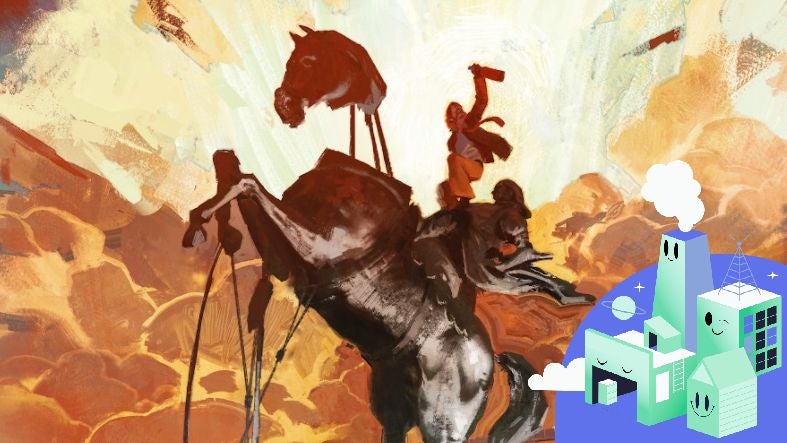Welcome back to The Video Game City Week. Next stop: statues.
The Horseback Monument
Statues are important. With egg still drying on the bronzed face of Margaret Thatcher’s newly unveiled Grantham statue (too controversial for its intended spot in Parliament Square), it’d be hard to argue otherwise. If you want to learn about a city, just look at its monuments — they mark the past, freezing idealised moments in time. But just as importantly, they point to the future — a figure’s raised sword directing our eyes towards a desired horizon. For as keen as London’s National Gallery is to teach us about Rembrandt and Van Gogh, it’s really the 150 foot tall column, flanked by lions, outside that most aptly captures our continued Imperial ambitions and fractured Nationalist psyche.
Disco Elysium’s Revachol is one of my favourite video game cities. Over the last couple of years I’ve thought considerably about why that is. One of the most obvious elements is its brilliant sense of place, and how weathered it feels. Weathered in two ways: the shivering sheets of coastal rain and sleet soaking the pockmarked pavements and streets. But also its timeworn layers of history and the contested politics that are constantly at play there. If you want to know a city’s ambitions or learn about its collective psyche, look to its statues.
In the center of a roundabout in the small Revacholian district of Martinaise stands the “Horseback Monument”. Created to commemorate the region’s most profligate king, the statue was blown to bits by Communards during the city’s brief revolutionary period. Afterwards, when the communists were resoundingly defeated by foreign powers and the city was taken back by pro-capitalist “Moralists”, a bunch of arty-farty liberal student types reconstructed the statue… but not as it was. Instead they used a matrix of cables and ropes to isolate the fragmented bits in thin air, “ironically” depicting the king in the very moment he was blown apart — “an instant frozen in time”.
